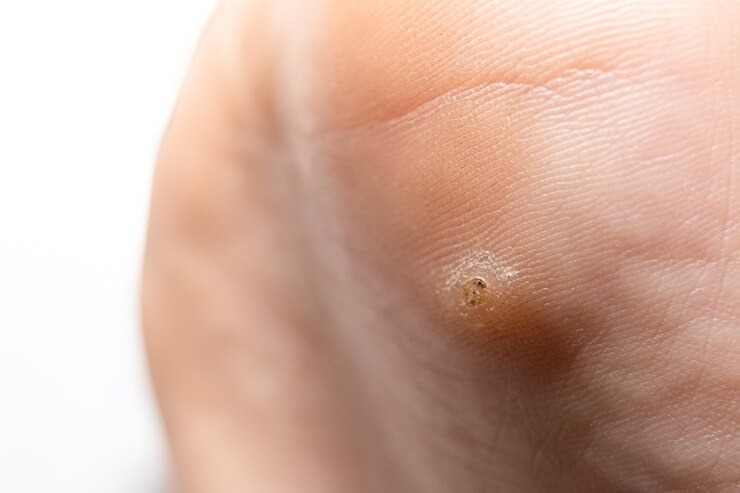Viral warts or verrucae are a type of skin infection caused by the human papillomavirus.
The viruses have many types which may infect different parts of the body like palms and soles, face, hairy skin on beard, scalp and other areas. It spreads by coming in contact directly with the virus from other people or through meat and fish handling. Once formed, picking and fidgeting with the viral wart outgrowth can help spread warts to fingernails and other areas of the body. Towels and razors which are shared can also facilitate transmission. Injured or dry skin is more prone to contracting warts. The virus triggers over multiplication of upper layers of the skin, which makes the skin thick and hard in that spot. Warts sometimes resolve spontaneously after your immune system fights off the virus. Since warts are contagious, cause discomfort and may be in cosmetically important areas, your doctor may recommend treatment for the same.
Treatment Options include:
At-home over-the-counter (OTC) wart removal medications, contain salicylic acid and other compounds which prevent viral multiplication or cause shedding of the virus-infected layers of the skin.
Cryotherapy is commonly used to treat warts in adults and older children. Your dermatologist can freeze warts with liquid nitrogen. The low temperature of the liquid nitrogen can cause temporary discomfort but the treatment is essentially free of downtime. Multiple sessions may be needed.
Electrosurgery Or Co2 Laser ablation burns the wart with an electric charge or laser beam through the tip of a machine after using a numbing cream to numb the skin. Multiple sessions may be needed.
Paring is scraping off the top layers of the wart with a scalpel or blade which can be followed by cryotherapy or electrosurgery to reach the base of the wart.
All of the above treatments can be used in different combinations to expedite the clearance of warts.

